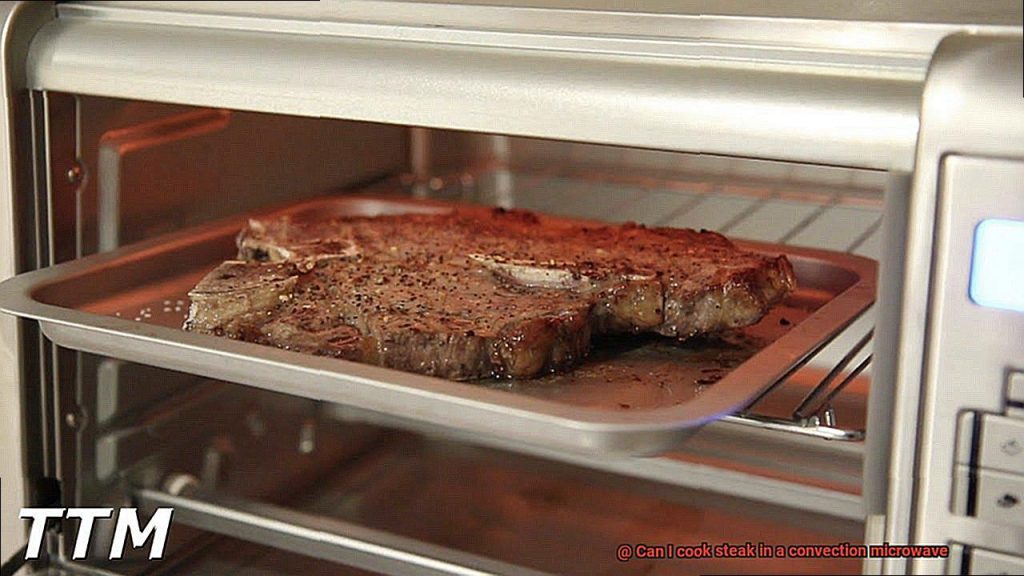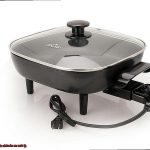Do you crave a juicy, succulent steak but don’t always have access to a grill or oven? No worries, because there’s a solution: the convection microwave. This nifty appliance combines the speed of a microwave with the hot air circulation of a convection oven, resulting in faster cooking times and even browning for your steak.
But before you start tossing your prized meat into the convection microwave, you might be wondering if it’s actually possible. After all, steak is a delicate and pricey cut of meat, and you don’t want to ruin it by using the wrong cooking method.
That’s where we come in. In this blog post, we’ll answer the burning question on every steak lover’s mind: “Can I cook steak in a convection microwave?” We’ll explore the pros and cons of this cooking technique and provide some helpful tips to ensure that your steak turns out perfectly every time. So whether you’re a busy professional looking for a quick meal or an adventurous cook seeking new techniques, keep reading to learn more.
Contents
What is a Convection Microwave?
Unlike traditional microwaves that only use electromagnetic waves to heat up food, convection microwaves also use a heating element and a fan to circulate hot air around the food. This innovative combination of microwave and convection heating allows for faster cooking times and more even results, making it perfect for dishes that require browning or crisping.
Convection microwaves come in various sizes and power levels, just like regular microwaves. They also have different features such as preset cooking programs, defrosting options, and temperature settings. Some models even come with a grill or broil function, which can be used to give food a crispy finish.
Compared to traditional ovens, convection microwaves are smaller and more energy-efficient. They preheat faster and don’t require as much time to cook. However, they may not be suitable for certain types of cooking such as baking large cakes or roasting whole turkeys.
When it comes to cooking steak in a convection microwave, there are a few things to keep in mind. Firstly, it’s important to choose the right cut of meat. Lean cuts such as sirloin or tenderloin may dry out easily in the microwave, while fatty cuts such as ribeye or porterhouse may fare better due to their higher fat content.
To cook your steak in the convection microwave, start by preheating the oven to your desired temperature. Place the seasoned steak on a microwave-safe plate and cover it with plastic wrap or a microwave-safe lid. Cook on high for about four to five minutes per side for medium-rare, depending on the thickness of your steak.
After cooking, let your steak rest for at least five minutes before serving, allowing the juices to redistribute throughout the meat and resulting in a more tender and flavorful steak. If you prefer a crispy exterior, consider searing your steak in a hot skillet after cooking in the convection microwave.
What Type of Steak Should I Use?
When it comes to cooking steak in a convection microwave, the type of steak you use is crucial. The right cut can make your meal delicious and juicy, while the wrong one could leave you with a tough and dry piece of meat. Here are some important factors to consider when choosing the perfect steak for your convection microwave cooking experience.
First and foremost, choose a steak that is relatively thin and uniform in thickness. This will ensure even cooking and prevent any dry or overcooked areas. Steaks that are no more than 1 inch thick are ideal for convection microwave cooking.
The marbling of the steak is another essential factor to consider. Marbling refers to the small streaks of fat that run through the meat. Steaks with high levels of marbling will be more tender and flavorful, making them perfect for cooking in a convection microwave.
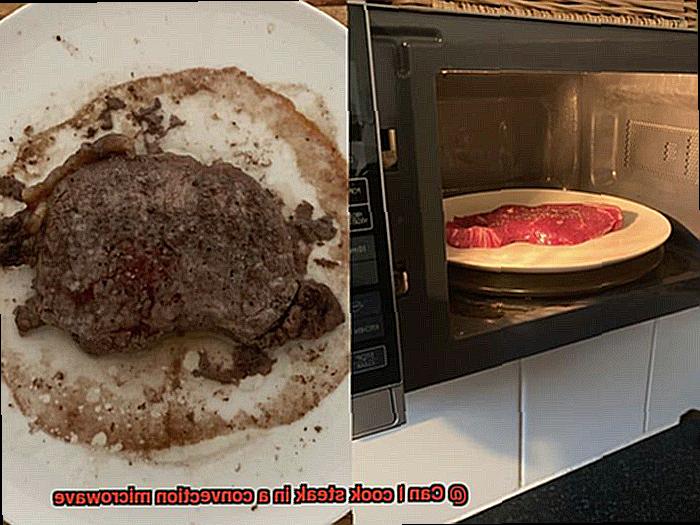
Here are some great options for steaks to cook in a convection microwave:
- Ribeye: This cut is known for its rich flavor and marbling, making it a top choice.
- Sirloin: A leaner cut than ribeye, sirloin is still a great option for convection microwave cooking. It’s also budget-friendly.
- Flank steak: This cut is thin and lean, making it perfect for quick cooking methods like the convection microwave.
- Skirt steak: Similar to flank steak, skirt steak is thin and flavorful. It’s also more affordable than some other cuts.
- Filet mignon: This cut is known for its tenderness and buttery texture, making it a luxurious choice for special occasions.
To ensure the best quality, always choose fresh, high-quality cuts of meat. Look for bright red color without any discoloration or browning. Avoid steaks with a strong odor or slimy texture.
Preparing the Steak
Before you start cooking, it’s crucial to properly prepare your cut of meat for maximum flavor and tenderness. As an expert in preparing steaks, let me guide you through the steps:
Step 1: Choose wisely
The first step in preparing your steak is selecting a high-quality cut. Look for a steak that is at least 1 inch thick with good marbling, such as ribeye or sirloin. Once you have your steak, remove it from the refrigerator and let it sit at room temperature for about 30 minutes before cooking. This will allow the steak to cook more evenly.
Step 2: Seasoning is key
Now that your steak has reached room temperature, it’s time to season it. Don’t be afraid to get creative with seasonings, but a simple seasoning of salt and pepper on both sides will do wonders. Rub the seasonings into the steak to ensure they stick.
Step 3: Marinade (optional)
Want to take things up a notch? Consider marinating your steak for an extra burst of flavor. Place your seasoned steak in a shallow dish and pour your desired marinade over it. Cover with plastic wrap and let it sit in the refrigerator for at least an hour, or up to overnight.
Step 4: Pat dry and preheat
When it’s time to cook the steak, pat it dry with paper towels to remove any excess moisture. This will help create a nice crust on the outside of the steak. If you want those beautiful grill marks on your steak, preheat a skillet or grill pan over high heat until it’s very hot. Add a small amount of oil or butter to the pan and then place the steak on it at an angle.
Step 5: Cook and rest
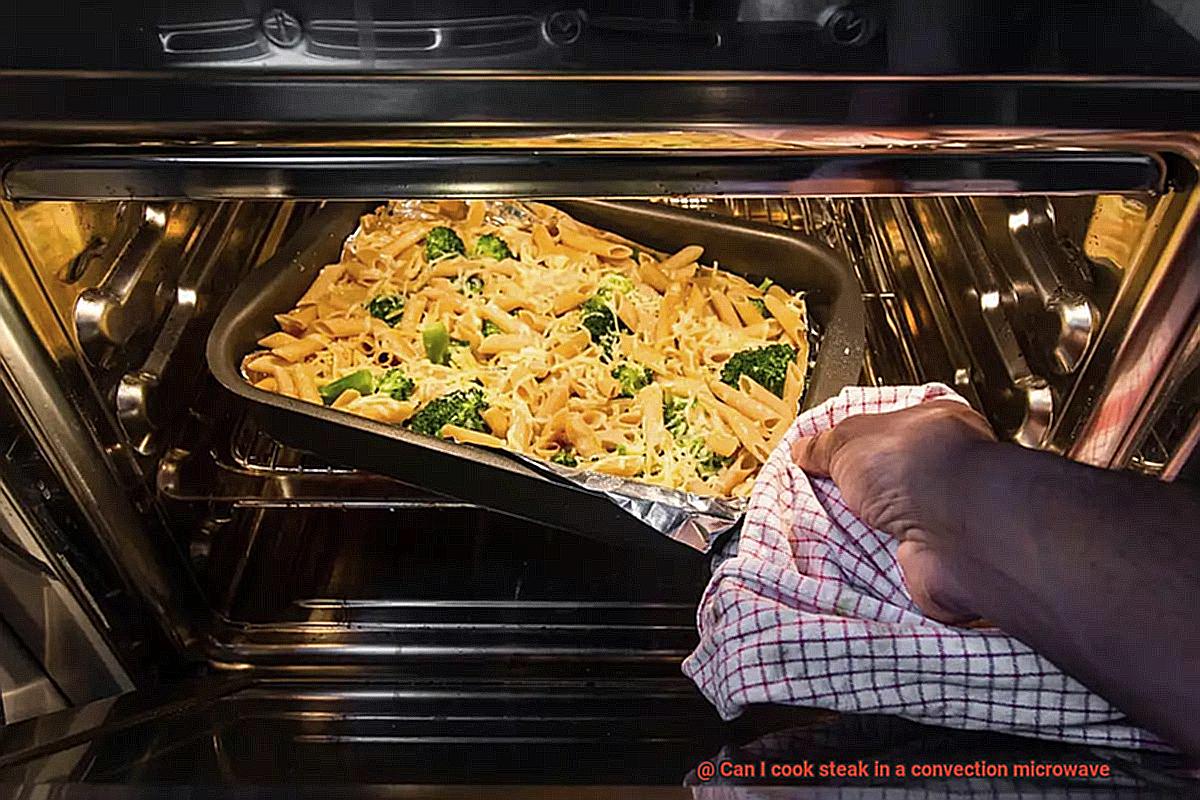
Cook your steak for 2-3 minutes per side, rotating the steak 90 degrees halfway through each side to create those coveted grill marks. Once cooked, let the steak rest for a few minutes before slicing and serving. This will allow the juices to redistribute, resulting in a tender and juicy steak.
Bonus tips:
- Use a meat thermometer to ensure your steak is cooked to your desired level of doneness.
- For even cooking, avoid overcrowding the skillet or grill pan.
- Experiment with different seasonings and marinades to find your perfect flavor profile.
Preheating the Oven
As someone who has studied the art of cooking, I can tell you that preheating your oven is a crucial step when preparing steak in a convection microwave. Why, you ask? Well, it’s all about ensuring that your meat cooks evenly and thoroughly, without becoming dry or burnt.
To preheat your oven for cooking steak in a convection microwave, start by setting your desired temperature. Most recipes and user manuals recommend a temperature of around 375-400°F. Then, give your oven some time to heat up – at least 10-15 minutes should suffice. And don’t forget to double-check the temperature with an oven thermometer to ensure an even cook.
But preheating is just one piece of the puzzle. To cook a truly delicious and tender steak in your convection microwave, consider other factors like selecting the right cut of meat, seasoning and marinating your steak, and using proper cooking techniques.
When it comes to selecting the right cut of meat, consider choosing ribeye or sirloin for optimal flavor and texture. For seasoning and marinating, experiment with different herbs and spices to add depth and complexity to your dish.
And finally, remember that cooking steaks in a convection microwave requires some finesse. Use tongs instead of a fork to avoid piercing the meat and losing its natural juices. And give your steak ample time to rest before slicing into it – this will allow the juices to redistribute throughout the meat for maximum tenderness.
Cooking the Steak in a Convection Microwave
Though it may seem daunting, with a little know-how and attention to detail, you can easily prepare a mouthwatering steak right in your own kitchen.
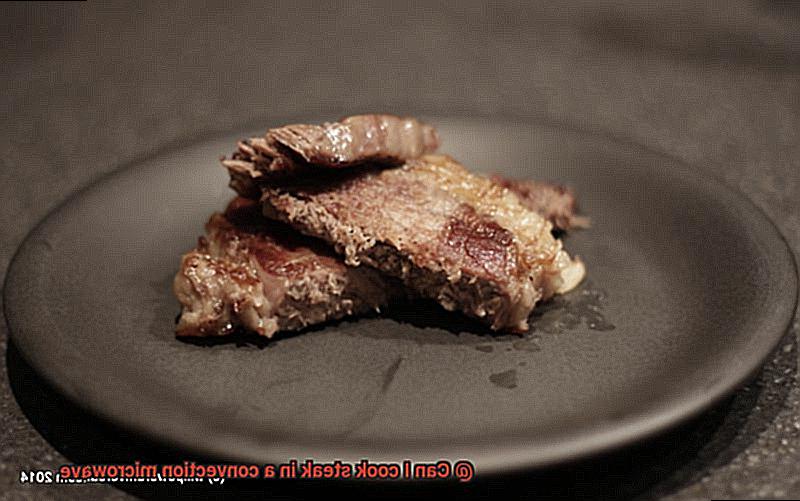
The first step to cooking a steak in a convection microwave is selecting the right cut of meat. Choose sirloin, ribeye, or filet mignon for their tenderness and ability to cook well under high heat. It’s also best to select steaks that are at least 1 inch thick to ensure even cooking. Once you’ve picked out your steak, season it with salt, pepper, and any other herbs or spices that you prefer.
Next, preheat your convection microwave to 425°F. Place the seasoned steak on a microwave-safe plate and cover it with either microwave-safe plastic wrap or a lid. Cook the steak for 6-8 minutes per side, rotating it halfway through cooking to ensure that both sides are evenly heated. It’s crucial to use a meat thermometer during this process to check the internal temperature and avoid overcooking or undercooking your steak. For medium-rare, aim for a temperature of around 135°F, while medium should be around 145°F.
Once your steak is cooked to perfection, allow it to rest for a few minutes before carving into it. This resting period ensures that the juices have time to redistribute throughout the meat, resulting in a more tender and flavorful steak. Pair with your favorite sides and enjoy.
Letting the Steak Rest
If so, let me tell you about the crucial step that cannot be overlooked – letting the steak rest before serving. As an expert in this topic, I can attest that this simple technique can make all the difference in achieving that delicious and juicy flavor.
When cooking steak in a convection microwave, it’s important to remember that resting the steak allows the juices inside to redistribute and settle. By doing this, the juices that were concentrated in the center of the steak during cooking will spread evenly throughout the meat, resulting in a more tender and juicy final product. Trust us; your taste buds will be grateful.
To properly rest a steak, remove it from the heat source and place it on a cutting board or plate. Tent it loosely with foil to keep it warm but avoid wrapping it too tightly as this can cause the steak to continue cooking and dry out. The recommended resting time for a steak varies depending on its thickness. As a general rule, a steak should rest for at least 5-10 minutes before slicing into it. Thicker cuts may require up to 15 minutes of resting time.
It can be tempting to cut into a fresh-off-the-grill steak right away, but resist the urge. By allowing your steak to rest, you’ll be rewarded with a more flavorful and tender meal. Here are some additional tips to keep in mind:
- Letting your steak rest also allows time for it to cool down slightly, making it easier to handle and less likely to burn your mouth.
- Resting your steak allows you to prepare any accompanying side dishes or sauces while you wait.
- If you’re worried about your steak getting cold during resting time, consider warming up your plates beforehand so they retain heat.
Sealing in Juices and Achieving a Crispy Exterior
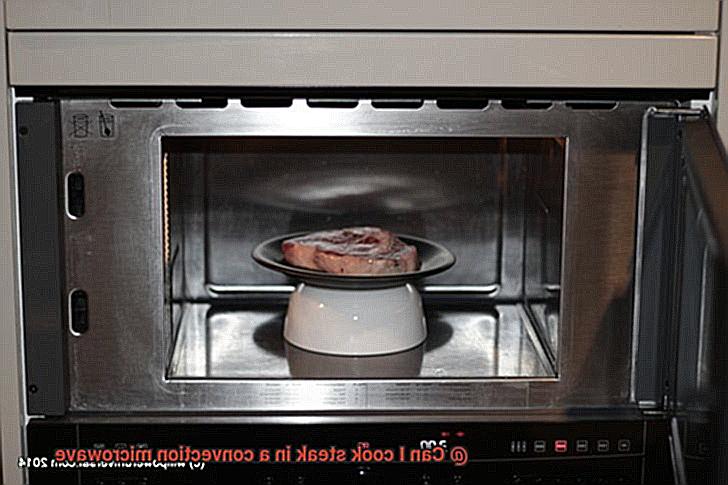
Firstly, let’s talk about searing. Searing your steak before cooking it in the microwave is a crucial step in achieving a delicious caramelized crust on the outside of the meat. This crust not only adds flavor but also helps seal in moisture. You can sear your steak on the stovetop or using a high-heat setting on your grill. Trust me, this step is well worth the extra effort.
Another way to enhance the flavor and texture of your steak is by using marinades. A simple marinade made with olive oil, garlic, salt, and pepper can add a ton of flavor and help keep your steak moist during cooking. The longer you marinate, the more flavorful and tender your steak will be.
Now it’s time to cook your steak in the convection microwave. It’s important to use a meat thermometer to ensure that your steak reaches your desired level of doneness. Microwaves cook quickly, and it’s easy to overcook or dry out your steak if you’re not careful. Also, make sure to cover your steak with foil or a lid while cooking to prevent drying out.
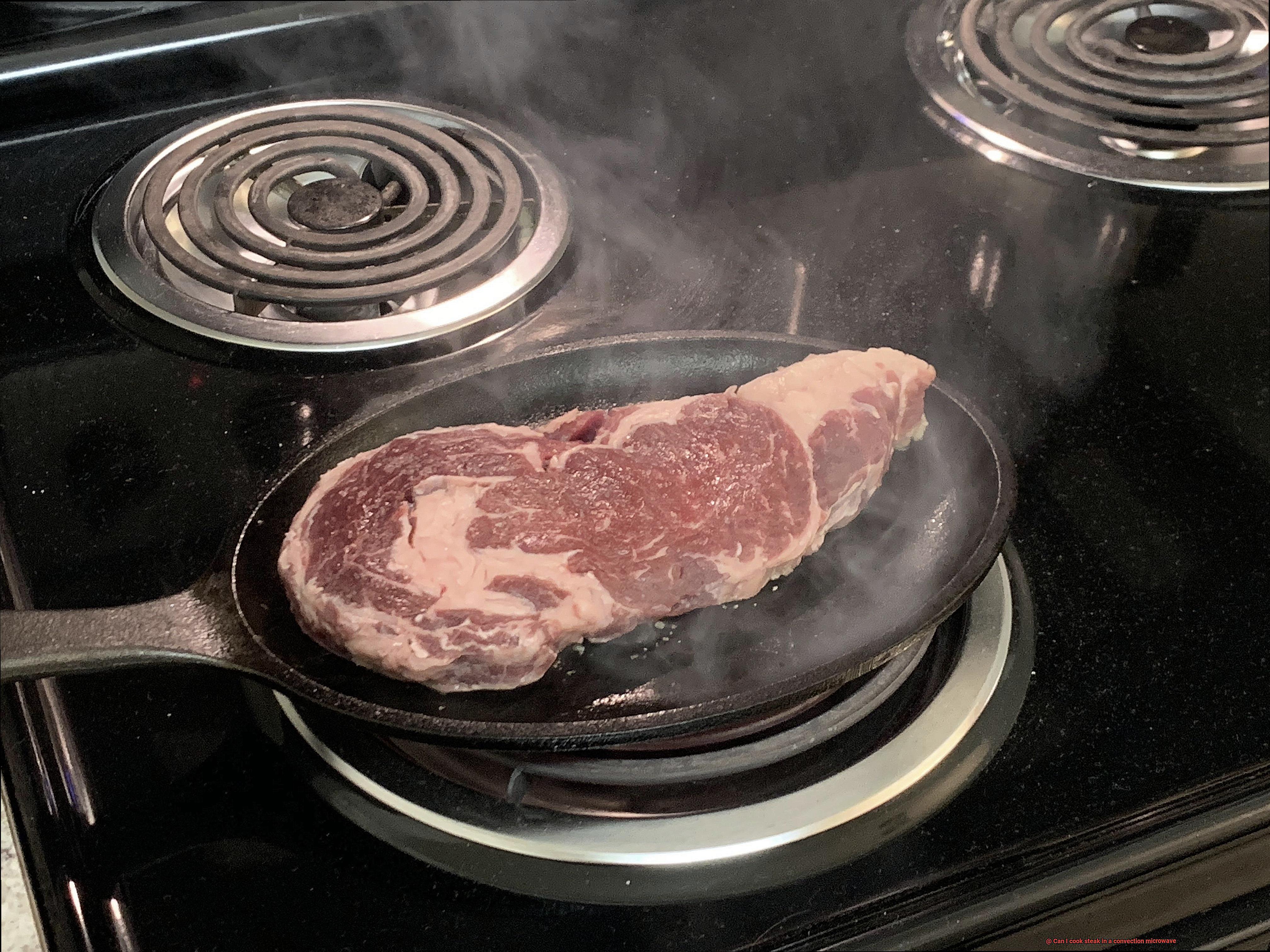
Once your steak is cooked, allow it to rest for at least five minutes before serving. Resting allows the juices to redistribute throughout the meat, resulting in a more tender and flavorful meal that will make your taste buds sing with joy.
FopZTE9Z5ig” >
Conclusion
In conclusion, the convection microwave is a versatile appliance that can be used to cook steak to perfection. The hot air circulation and microwave technology work together to create an even cooking process, resulting in a juicy and succulent meal in no time.
Choosing the right cut of meat is crucial for success. Opting for thinner and more uniform steaks with higher levels of marbling will ensure maximum tenderness and flavor when cooked in a convection microwave.
Proper preparation is also key. Seasoning with salt, pepper, and your favorite herbs or spices can elevate the taste profile, while marinating can add an extra layer of complexity.
Preheating your oven to the desired temperature ensures even cooking without drying out or burning your steak. Don’t forget to let it rest before serving to allow the juices inside to redistribute and settle for optimal tenderness.
For those seeking a caramelized crust on their steak, searing it before microwaving is an excellent option. And don’t be afraid to experiment with different marinades for added depth of flavor and texture.
You may also like:





